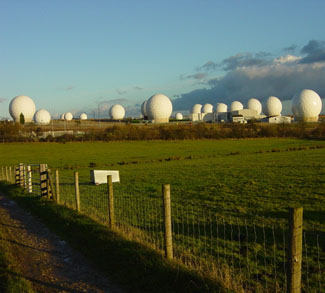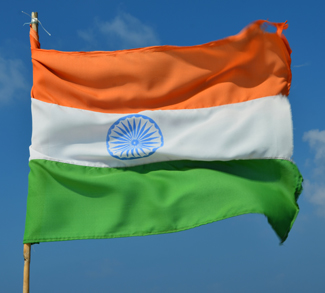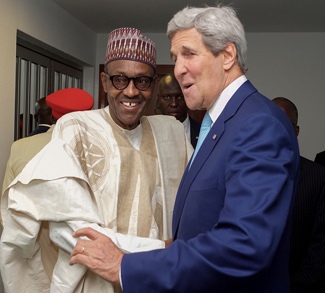Over the last week, the German newspaper Der Spiegel and the Sydney Morning Herald disclosed that the Australian government was carrying out electronic surveillance and eavesdropping on phone and internet communications. The security organization Australian Signals Directorate (ASD) concealed special electronics equipment within the Australian High Commissions in Kuala Lumpur and Port Moresby, PNG, as well as embassies in Bangkok, Beijing, Dili, Jakarta, and Hanoi, based upon information released by intelligence whistleblower Edward Snowden and a former Australian intelligence officer.
Although these revelations are not new and have probably long been suspected by the host governments concerned, the exposing of espionage activities in Australia’s diplomatic missions has caused the Australian government great embarrassment, which could strain relations within the region for years to come. So far the only comment from a “shell shocked” Abbott government was from Foreign Minister Julie Bishop, who said that “it was not policy of the Australian government to comment on intelligence matters,” hardly enough to placate some very angry governments within the region.
Ms. Bishop certainly has cause for concern because last week’s revelations, according to other documentation and former Australian diplomats, are just the tip of the iceberg.
Australia has been collecting intelligence in Southeast Asia for decades through a multitude of methods and a large array of facilities. In addition to the electronic surveillance activities revealed last week, Australian operatives stationed under diplomatic cover across diplomatic missions in the region carry out continuous ‘on the ground’ HUMINT (human intelligence) operations.
Australia has developed a very complex intelligence structure similar to the United States. In addition to data analysis groups like the Office of National Assessments (ONA) and the Defence Intelligence Organization (DIO) under the Defence Intelligence and Security Group, there are also a number of data collection and operational agencies carrying out surveillance and covert operations around the world. They include the Australian Signals Directorate (ASD), which is said to be the agency responsible for eavesdropping from Australian diplomatic missions. In addition, the Defence Imagery and Geospatial Organization (DIGO) is responsible for imagery intelligence collection. Under the Department of Foreign Affairs and Trade (DFAT) is the Australian Secret Intelligence Service (ASIS), which carries out overseas intelligence gathering and operations. Under the Australian Parliament and the responsibility of the attorney general is the Australian Security Intelligence Agency (ASIO), which looks after Australia’s internal national security via surveillance, data collection and analysis of threats to Australian interests both domestically and overseas. A host of other agencies with various functions also exist.
Since the 9/11 terrorist attacks on the US, the Australian intelligence community has been considered an equal partner with the US, operating in an almost fully-integrated fashion. There are a number of facilities on Australian territory which make important contributions to the NSA network. The Australian Signals Directorate (ASD), as well as using diplomatic missions to collect telephone and internet data under a program called STATEROOM, has a number of dedicated signals collection facilities in Australia.
Pine Gap, around 20 km from Alice Springs in the Northern Territory, is a joint facility handling signals collection. Here the ECHELON software undertakes a meta-collection of phone, fax, email and other data traffic from satellite transmissions, public switched phone networks, and microwave signals. This data is screened for pre-programmed keywords, and is linked to the British eavesdropping facility at Menwith Hill, along with a chain of other intercepting facilities around the world. Pine Gap collected important intelligence during the Indochina conflicts on North Vietnam, the Laotian Pathet Lao, and the Cambodian Khmer Rouge during the 1970s and 80s. The facility also played a significant role in the Gulf wars and Afghanistan campaign. After 9/11 there has been a focus on the collection of intelligence on terrorism suspects. Through combining imagery with radio and mobile phone transmissions, potential targets can be pinpointed for drone strikes. This information is fed to the US Drone Strike Program.
Pine Gap is also part of the X-Keystone network collecting and analyzing online data. Access to Pine Gap is critical to the United States because many of its spy satellites are controlled from this facility, and it houses an early warning missile launch detection system.
A satellite communications facility at Kojarena, near Geraldton, in Western Australia is responsible for intercepting signals and mobile phone communications from China, Russia, Japan, India, and Pakistan through a regional satellite network. Another satellite station at Shoal Bay in the Northern Territory focuses primarily on intercepting Indonesian phone communications and military signals. This facility was instrumental in monitoring East Timor in 1999 during the referendum for independence.
There is a small remote-controlled facility on Cocos Islands that is used for signals collection, which feeds into the ASD headquarters at Russell Hill in Canberra. The Washington Post reports that the Cocos Islands facility is now an important base in South China Sea surveillance given China’s increasing presence. Former Australian Defence Minister Stephen Smith announced last year that Cocos Islands might be used for US drone flights over the South China Sea. These activities suggest that China is the main surveillance target, even though Australia’s latest defence policy white paper stated otherwise.
Australia has also developed a listening post connected to major undersea communication cables carrying voice and internet traffic between the US and Asia, an action far exceeding any legislative authority.
Several years ago, some Australian members of parliament were given a security briefing where a video conference intercept of two of the most senior Malaysian military commanders was proudly shown to demonstrate Australia’s electronic surveillance abilities; proof of Australia’s access to some of the most sensitive military and diplomatic communications in the region. Speculation exists that Australia regularly intercepts Indonesian President Susilo Bambamg Yudhoyono’s and other high-ranking officials’ mobile phone conversations. Australia has been regularly reading Indonesian diplomatic traffic since the 1950s, which played an important role in helping the US undermine the Sukarno regime and install Suharto as president back in 1965.
The abovementioned data collection system is supplemented with good working relationships with communications companies like Foxtel, Macquarie, Telecom, and Optus, as well as major computer and internet companies like Microsoft, Apple, Google, Verizon, Yahoo, Facebook, and Twitter. Similar links also exist with banks and credit card providers. Data from these sources is screened through the meta-data collection system PRISM, according to Wayne Madsen of the Strategic Culture Centre.
Perhaps even more disturbing than electronic surveillance exposed by Edward Snowden are the HUMINT activities undertaken by Australian operatives under diplomatic cover at Australian missions abroad. According to a retired senior diplomatic official previously stationed in Moscow and Jakarta and an Australian Federal Police (AFP) officer once stationed in Kuala Lumpur, a large array of human intelligence is collected using these clandestine groups within diplomatic missions. Each group operating from a diplomatic mission might include operatives from ASIO, ASIS, the AFP, the Defence Intelligence Group, the Australian Taxation Office (ATO), military attachés, and the Department of Immigration and Border Protection. These operatives are concerned with both Australian and foreign nationals in the areas of business activities, money laundering, counterfeiting, identity theft, tax evasion, narcotics, human trafficking, arms trading, pedophilia, terrorism, general criminal activities, and anything considered important to the interests of Australia. Greatly improved signals collection technology has allowed for larger deployments of HUMINT activities. In addition, some work is sub-contracted to ‘CIA-friendly’ companies like VFS Global which collect and process visa applications on behalf of the “UKUSA” security collaborating countries of UK, USA, Canada, Australia, and New Zealand. VFS has a proprietary client profiling system which assists on creating databases on “persons of interest”.
Not all activities are aimed at the host governments the diplomatic missions are operating within. A large proportion of time is spent by these clandestine groups monitoring the personnel of other diplomatic missions of interest. For example Australian intelligence is interested in what the trade officials of the Chinese embassy are doing in Jakarta, Bangkok, Hanoi, and Kuala Lumpur, etc.
Other priorities include the surveillance of Australian citizens abroad which an agency may have an interest in. Over the last decade, intelligence services have become much more interested in criminal intelligence where a formal network of transnational Crime Units (TCU) has been set up across the Pacific in the Cook Islands, Fiji, Kiribati, Micronesia, Pulau, Niue, Solomon Islands, Tonga, PNG, and Vanuatu. This is coordinated by the Pacific Transnational Crime Coordination Centre (PTCCC) located in Apia, Samoa. The Transnational Crime Units assist the Australian Transaction Reports and Analysis Centre (AUSTRAC) track the financial transactions of Australian citizens and corporations both home and abroad.
The CIA, NSA and other partner intelligence agencies are now primarily focused upon economic, business, industrial, trade, and political data collection. This information is vitally important in trade negotiations and shaping the future finance-scape of the region, particularly with the US aspiration of forming the Trans-Pacific Partnership (TPP) and the ‘Asian pivot’ as a counter to growing Chinese influence. Former CIA operative Philip Agee, in an interview before his death in 2008, confirmed that much of the information collected by intelligence is used to assist US multinationals rather than for national security purposes. Another former Australian intelligence officer said that the data collected had very little to do with ‘the war on terror,’ but tended to be political, diplomatic, and commercial in nature. Australia is sometimes placed in the position where it collects intelligence used for the interests of the US over the interests of Australia, particularly in the commercial arena. Australia’s poor showing in gaining commercial contracts after the Iraqi invasion could be seen as testimony to this.
Ironically, Australia is cutting its foreign aid budget by AUD 4.5 billion over the next 4 years, while simultaneously increasing its intelligence budget. This is not a good message to be sending out to the region if sincere and open engagement is truly being sought by the Abbott government. Asia is judging Australia by its actions, not rhetoric, and there appears to be a massive failure which the Abbott government must quickly react to if Australia’s interests are to be safeguarded.
This means turning inward onto the security agencies themselves. There have been allegations that Australian surveillance services are ‘out of control’ and unaccountable, where laws are regularly flouted while they keep track of both Australian and foreign citizens. There have been allegations that ASIS tried to destabilize the Aquino government in the Philippines during the 1980s. There have been allegations that ASIS assisted MI6 to protect British interests in Hong Kong and Kuwait, potentially to the detriment of Australian interests. There have been accusations that ASIS deliberately lied to then-Prime Minister Gough Whitlam about covert operations in Chile during the early 1970s. Numerous Royal Commissions and inquiries have apparently not solved any of these problems.
Now the security agencies have damaged Australia’s relations with its neighbors, trading partners, and friends to the point where it could take many years to repair. Taking advantage of diplomatic immunity to collect intelligence might be akin to an unfaithful partner, eliciting the very same angry and emotional response.
One of the collateral effects of this scandal is that Australia has been found not to be true to its own democratic ideals. It has been found wanting, by disregarding its own policies, if not its own laws. This is not to mention the moral questions raised by Australia’s facilitation of target information for US drone strikes which many view as war crimes.
The prevailing attitude within the Australian intelligence community that it is not accountable to temporary holders of public office must be knocked on the head with a thorough cleaning out of personnel if any creditability is to be salvaged in Australia’s geopolitical neighborhood. Resignations must be forthcoming in the national interest.
Australia must be prepared for a strong backlash in Asia where it is now seen as being blindly aligned with US security interests, and thus “Australia is not of the region,” but some alien small-time treacherous power and therefore unwelcome as a future partner. That is what the “intelligence Tai Pans” have done for Australia, cowardly hiding behind legislative protection of their identities.
Finally, from a geopolitical perspective, the Der Spiegel and Sydney Morning Herald reports came at a time when Obama’s “no show” in the region for the Bali and Brunei Summits gave Russian President Putin, and even more so Chinese President Xi Jinpeng, uncontested space to win the ‘hearts and minds’ of regional leaders.
We may be watching a great shift in regional influence where Australia may miss the boat.




